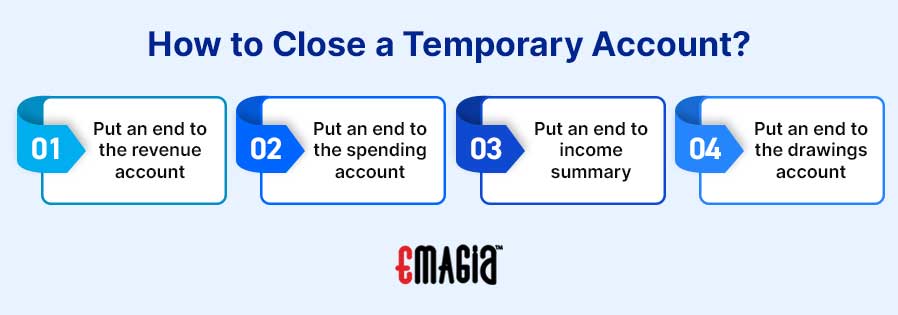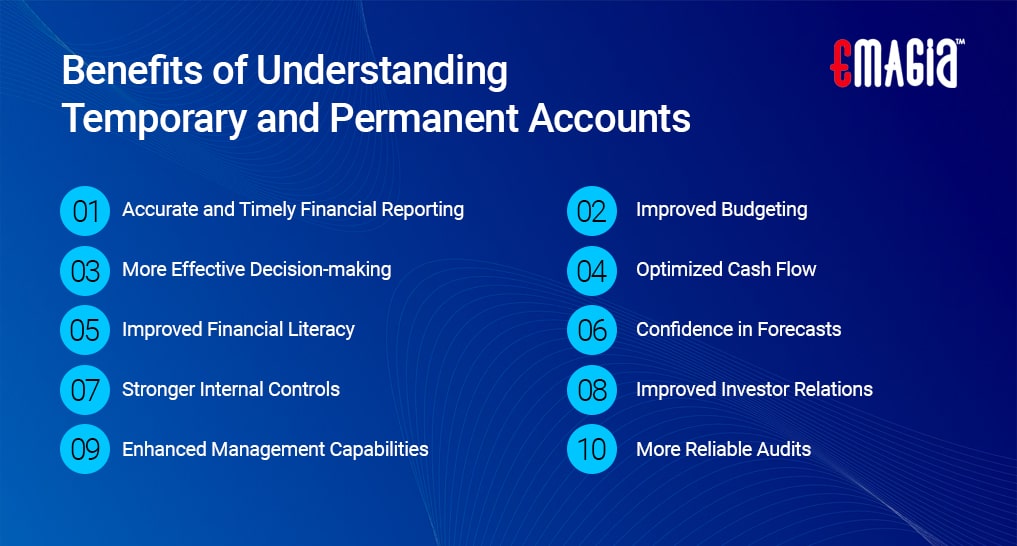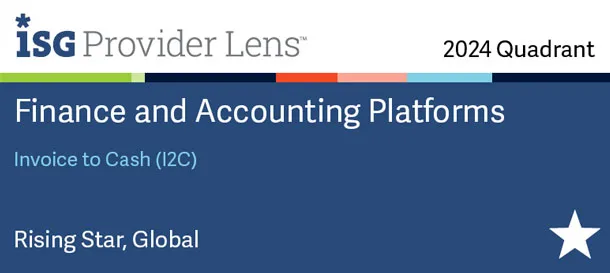To properly manage finances and make wise decisions, businesses must understand the distinction between temporary and permanent accounts. Both sorts of accounts are necessary, yet they have different functions and unique traits. Permanent accounts track the company’s long-term financial situation, including assets, liabilities, and equity, whereas temporary accounts measure revenue, expenses, and gains or losses during a specific period. In this article, we will examine the distinctions between temporary and permanent accounts, and their examples, give them some instances, and discuss how they affect financial reporting and analysis.
What are Temporary Accounts?
Temporary accounts are when the balance is not carried forward at the end of an accounting period and which are later tied to a certain fiscal term. At the end of that period, a closure entry is made to reset the balance to zero. Any money that remains in these accounts is subsequently transferred to a permanent account, and the accountants produce the appropriate records to prove the transaction. When the new fiscal period begins, the new account is then reset once more to zero.
A temporary account may be kept for a year or even a quarter, although there is no specific fiscal period for doing so. Today, it is fairly typical to use quarterly temporary accounts for tax payments and tracking an organization’s financial performance. Companies can track their accomplishment more easily with the help of these accounts.
What are Permanent Accounts?
Permanent accounts remain open through the end of the accounting period and carry over their cumulative balance to the following period. Accountants note the closing balance after the period, but the account is not terminated by resetting the amount to zero. Instead, when a new period starts, permanent accounts continue to be open and preserve their closing balance from the prior period.
Permanent accounts do not need to be closed at the end of the period, unlike temporary accounts. They make it possible to track money over several accounting quarters in a year.
Data-driven Finance For Your Accounts Receivables Operations. Watch Now
How Do Temporary Accounts Differ from Permanent Accounts?
When a temporary account expires, a company distributes any funds that are remaining which results in a zero balance. A temporary account shows activity for a specified fiscal term, while a permanent account shows continual progress for a business.
Some examples of temporary accounts are sales discounts, earned interest, utilities, sales returns, rent, and some other expenses. Temporary accounts are reset every period, in contrast to permanent accounts. Your temporary accounts’ balances are reset during the closing procedure to get them ready for a fresh term.
How can Account Receivable Automation Help?
Mistakes in bookkeeping can seriously harm your accounts and lead to overpaying or underpaying for your obligations. By automating financial and accounting operations, you can make sure that your job is done quickly and efficiently. With little to no human involvement, automated accounting involves the use of software to speed up key financial procedures like account reconciliation and statement preparation.

How to Close a Temporary Account
Closing a temporary account means closing all accounts that fall within that category.
- Put an end to the revenue account: This entails moving the revenue account’s balance to the income summary.
- Put an end to the spending account: The identical procedure is followed when moving money from the costs account to the income summary.
- Put an end to income summary: The revenue and expenses listed in the income summary are delivered to the capital account.
- Put an end to the drawings account: The capital account receives the funds from the drawing account.
Benefits of Understanding Temporary and Permanent Accounts

1. Accurate and Timely Financial Reporting
Having a clear understanding of which accounts are temporary or permanent can result in more precise and prompt financial reporting. Temporary accounts provide a brief overview of income and expenses during a specific period.
2. Improved Budgeting
Accounts that are properly categorized help a corporation allocate resources more effectively to meet its goals. Understanding permanent and temporary accounts can help firms create budgets that accurately reflect their present condition and objectives.
3. More Effective Decision-making
Making informed decisions can help firms if they are aware of permanent and temporary accounts. For instance, a company might choose long-term financing over short-term financing if they are confident that investment would result in future returns.
4. Optimized Cash Flow
Businesses can create plans to maximize their cash flows by understanding the difference between permanent and temporary accounts. This is especially important for small enterprises, which may need large sums of money when making expensive acquisitions or investments. Companies can develop ways to efficiently plan and manage their cash flow, which can lead to profitability by being aware of permanent and temporary accounts.
5. Improved Financial Literacy
Business owners who can distinguish permanent and temporary accounts have an advantage when making wise business decisions since they have a better understanding of their company’s financials. Businesses may maximize their investments and make educated decisions with greater financial knowledge.
6. Confidence in Forecasts
Businesses can more precisely plan for the future when they are aware of the temporary and permanent accounts. This enables them to develop long-term goals based on accurate estimates as opposed to conjecture. As a result, companies may more confidently prepare for success.
7. Stronger Internal Controls
Knowing how to categorize accounts appropriately aids organizations in establishing effective internal controls over their money because permanent and temporary accounts are unique from one another. This gives them the ability to prevent mistakes that can occur as a result of incorrect data entry or a failure to understand how each account should be utilized.
8. Improved Investor Relations
Financial statements that are accurate and timely help investors decide whether to invest in a company more wisely. Understanding the distinction between permanent and temporary would help firms offer a more favorable financial picture to investors, increasing their chances of doing so.
9. Enhanced Management Capabilities
Correctly classifying accounts provides business owners with an improved comprehension of their operational performance, enabling them to identify areas that require improvement and design strategies for boosting efficiency and profitability. In the end, this aids in the overall enhancement of business management.
10. More Reliable Audits
Understanding the various types of accounts will enable auditors to carry out more accurate and reliable financial audits. Their ability to offer accurate financial analyses, which are essential for maintaining solid relationships with investors, lenders, and other interested parties, is made possible by this expertise.
Conclusion
To effectively analyze their financial performance and make wise decisions, businesses must understand the distinction between temporary and permanent accounts. Temporary accounts capture short-term transactions for a certain period, but permanent accounts store long-term financial data that is carried over from one accounting period to the next. Businesses may efficiently manage their cash flow, provide accurate financial statements, and draw in investors by properly classifying their accounts. Revenue, costs, and dividends are instances of transitory accounts; assets, liabilities, and equity are examples of permanent accounts.
Delivering Exponential Impact with AI
- 75% faster onboarding of customers
- 85% and above current AR
- 95% and above auto-cash
- 80% and above manual task automation in deductions
- 90% and above touchless document data processing
- 24×7 access to customer accounts
- Bringing the Power of AI to Receivables Automation
Frequently Asked Questions:
Is Cash a Temporary Account?
No, they are permanent accounts.
Is the Common Stock a Permanent Account?
Yes, common stock is an example of a permanent account.
Is Cccounts Receivable a Temporary Account?
No, it is a permanent account.
What are Temporary Accounts in Accounting?
They are the accounts that don’t have their balances carried forward at the end of an accounting period but are nonetheless tied to a certain fiscal period.
What is not a Temporary Account?
Credit cards, savings, and checking accounts are not temporary.





